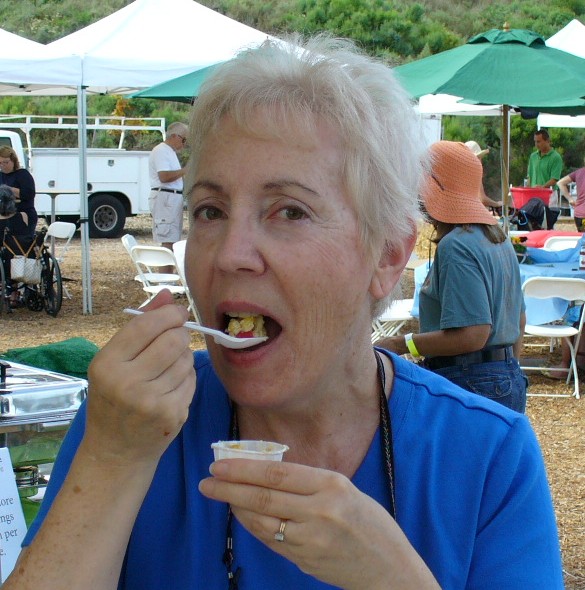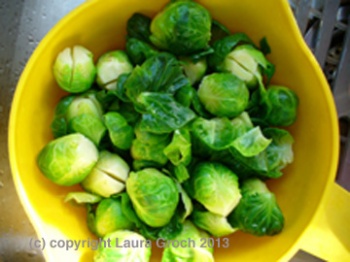Above: My blanched brussels sprouts, ready for patting dry and freezing.
I admit I’m one of those people who regularly prowl supermarket “clearance” racks. When I find something I can use that’s been marked down, it’s like hitting triple 7s at the slots.
At the market last weekend, I spotted two packages of brussels sprouts, each 24 ounces, both marked to half price, $1.99. (If you don’t happen to be a fan of brussels sprouts, please keep reading, as this will work with other vegetables.) Three pounds for $4, not bad. Into the cart they went.
I didn’t want to cook them all at once and live off brussels sprouts all week, so I decided to freeze them for future use. To do this, I would need to blanch them first.
Blanching means cooking the vegetables briefly, then stopping the cooking. Why not just toss the bags of sprouts into the freezer? According to my Better Homes and Gardens cookbook, the precooking stops the action of an enzyme that would otherwise make the vegetables deteriorate. With blanching, they’ll hold better in the freezer.
Once I got them home, the sprouts went into the sink for an inspection and a wash while a big pot of water came to the boil on the stove. I trimmed off the ends and put a vertical cut (some people do an “X”) into the sprout bottom, about a quarter-inch deep, for more even cooking when they come out of the freezer. Another pot of cold water was waiting in the sink.
Once the water boiled, I put in a couple of handfuls of sprouts, let them boil for a couple of minutes, then scooped them out and plunged them into the cold water. (For best results, use ice water, and refresh it as the ice melts.) Then I drained them, spread them on a paper towel and blotted them dry a bit. Once all the sprouts were done and cooled off, I portioned them into freezer bags, sealed them and patted them flat, then stacked them in the freezer for future use.
It’s pretty easy, and I love when saving money is easy. ;<) Check your cookbooks or the Internet for blanching times recommended for different vegetables — they can vary from 3 to 5 minutes, depending on the veggie and the size of the pieces you’ve cut it into.
It’s also good to consult an expert source about which vegetables need this technique and which ones don’t. Some vegetables, like onions and peppers, don’t need blanching — just wash, blot dry, and freeze. The National Center for Home Food Preservation has lots of good information and a chart of various veggies and times.
(c) Copyright Laura Groch 2013


Great tip! Going to try this next time.
LikeLike
Why do you cut into bottom?
LikeLike
The bottom of the sprout is a little thicker than the rest of the sprout. Cutting it open a little bit lets that part cook a little faster so the whole sprout is done at the same time, instead of overcooked leaves and still-tough stem part. If the sprouts are small, you don’t need to do this step. You can also simply cut the whole sprout in half to help it cook more evenly.
LikeLike
Such a timely reminder with summer bounty around the corner!
LikeLike
you know it! and strawberries are just coming in … mmm!
LikeLike
This is greeat
LikeLike
thanks for your comment, Lawrence!
LikeLike